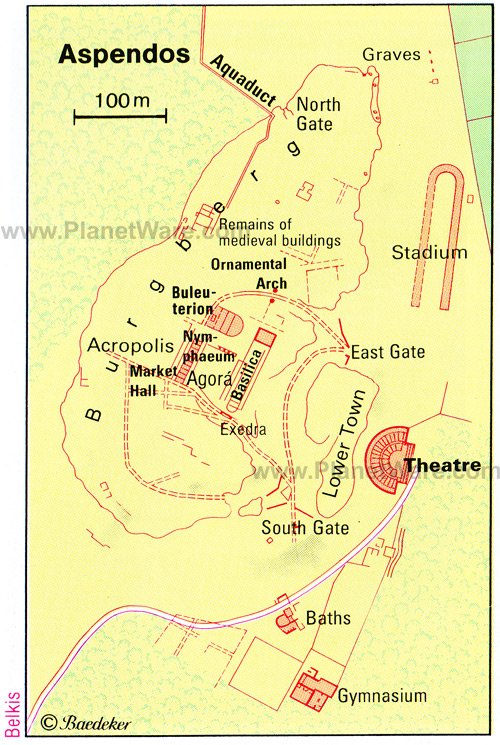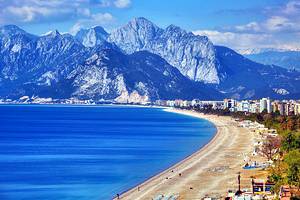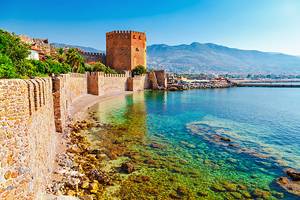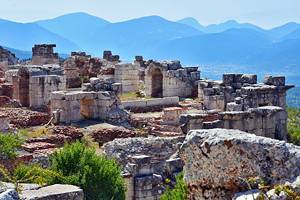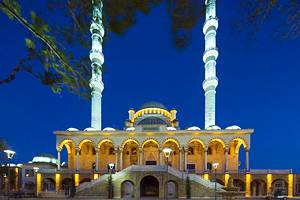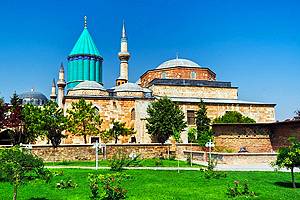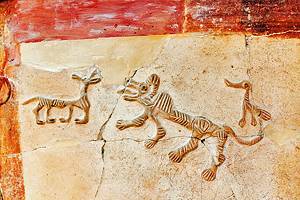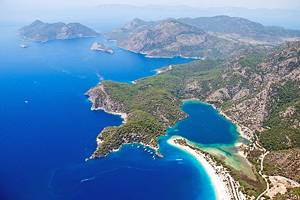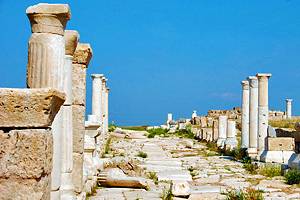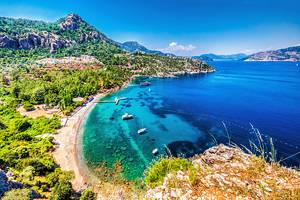Exploring the Ancient City of Aspendos: A Visitor's Guide
The ancient city of Aspendos, approximately 50 kilometers east of Antalya, is one of the big-hitter historic attractions for tourists visiting Turkey's Turquoise Coast region.
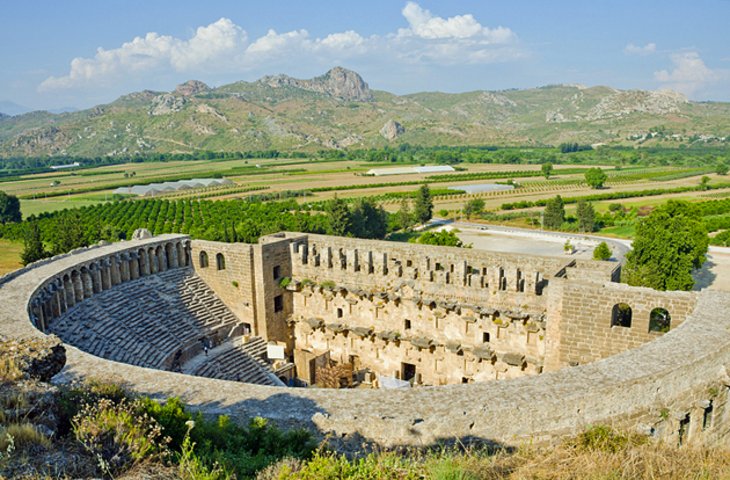
The site's theater – one of the Roman Empire's greatest remaining pieces of architecture – is the monument everyone is here to see.
If you can, try to come during the summer months, when this amazing building hosts the annual Aspendos Opera and Ballet Festival. It's a wonderful chance to experience the theater used for its original purpose and hear its stunning acoustics.
History of Aspendos
In antiquity, Aspendos was probably the most important city in the state of Pamphylia. This glorious city came under Roman control in 190 BCE and reached its epoch during the Roman period, when trade and commerce flourished here.
According to tradition, the city was founded by the famous Greek diviner Mopsos around 1000 BCE, and archaeologists have found evidence of a settlement here from the Hittite era (800 BCE) onwards.
Similar to the nearby towns of Ancient Perge (the ruins of Perge are 34 kilometers west of Aspendos) and Ancient Side (the modern town of Side is 33 kilometers southeast of Aspendos), the city's eventual decline was due to the silting up of its harbor on the Eurymedon River and the centralization policies of the Byzantine Empire.
By the time of Seljuk domination over this part of Turkey, Aspendos' once great theater was only being used as a caravanserai.
The Theater
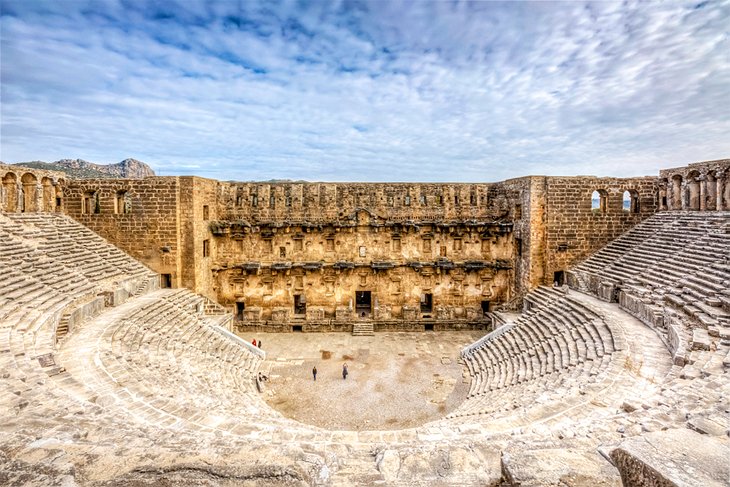
Aspendos' theater is one of the largest ever built by the Romans in Asia Minor, and today it is one of the best preserved examples of Roman theater architecture.
Located in the lower town area of the site, the theater was built in the 2nd century CE, during Marcus Aurelius' reign, by an architect called Zenon.
The mammoth seating plan could fit an audience of between 15,000 and 20,000.
It has been thoroughly restored and is now used for music and drama festivals, including Turkey's famous annual Aspendos Opera Festival.
The semi-circular auditorium, divided into two sections by a broad passage halfway up, has 20 tiers of seating, with 10 staircases in the lower half and 19 tiers with 21 staircases in the upper part. Round the top runs a barrel-vaulted colonnade.
At either end of the stage are vaulted passages giving access to the orchestra.
The two-story stage wall was articulated by slender double columns with Ionic capitals on the lower order and Corinthian capitals on the upper one. The double column flanking the central entrance to the stage had a common broken pediment.
The stage itself had a wooden roof suspended by ropes, and the auditorium, too, was probably covered by an awning.
Acropolis
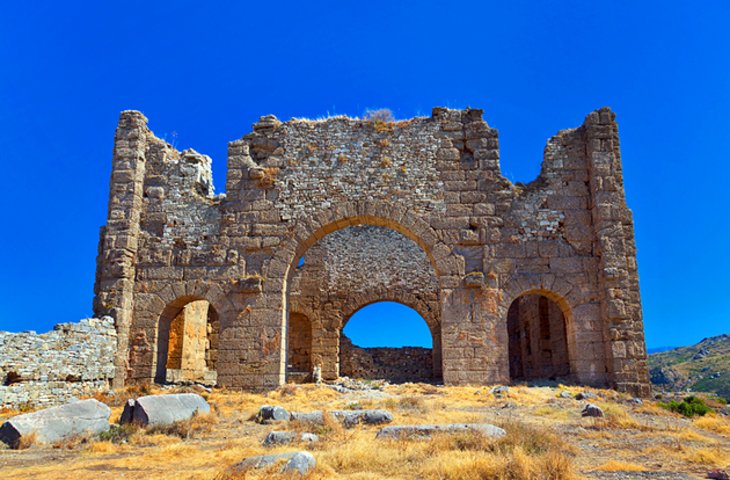
Although most tourists are here to simply see the theater, if you have some time up your sightseeing sleeve, there are plenty more things to do. Immediately above the lower town of Aspendos rises the 40-meter acropolis hill.
Beyond the remains of a small temple and the agora stands the nymphaeum (fountain shrine), once a monumental structure articulated by double columns but now represented only by a wall 32-meters long with 10 niches for statues.
Adjoining this on the north are the foundations of another building, probably the bouleuterion or council chamber.
Aqueduct
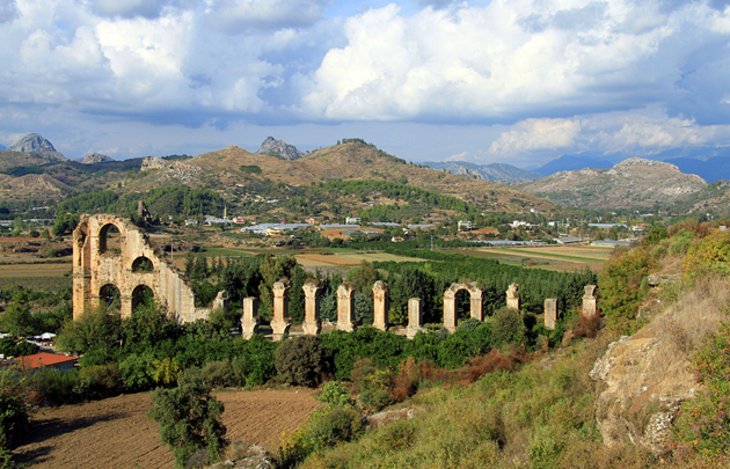
Just to the north of Aspendos' acropolis hill are the remains of a magnificent ancient aqueduct and two linked water towers, which would have originally provided water for the city.
The aqueduct would have originally transported water for 19 kilometers and was built at some stage in the 3rd century CE. It's thought that the aqueduct was only in service for approximately 150 years, with earthquake damage being the probable theory as to why the aqueduct stopped working.
More Related Articles on PlanetWare.com
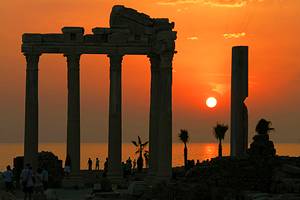
Roman Ruins: Check out Side for its theater and the temple ruins right on the shore, or head north of Antalya for the beachfront remnants of Lycian Olympos, which contains many Roman remnants. Inland, head to Pamukkale, with the spa town remains of Hierapolis on the summit of the travertines.
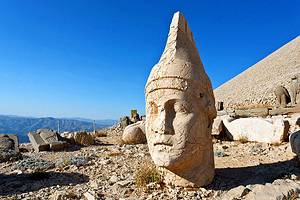
Historic Sites: To discover some of Turkey's many non-Roman Empire sites head to Mount Nemrut for its fascinating statues on the summit; Safranbolu to stroll streets lined with the most well-preserved Ottoman architecture in the country; or check out the necropolis of the lesser-seen site of Gordion, home to the story of the Gordion knot.
